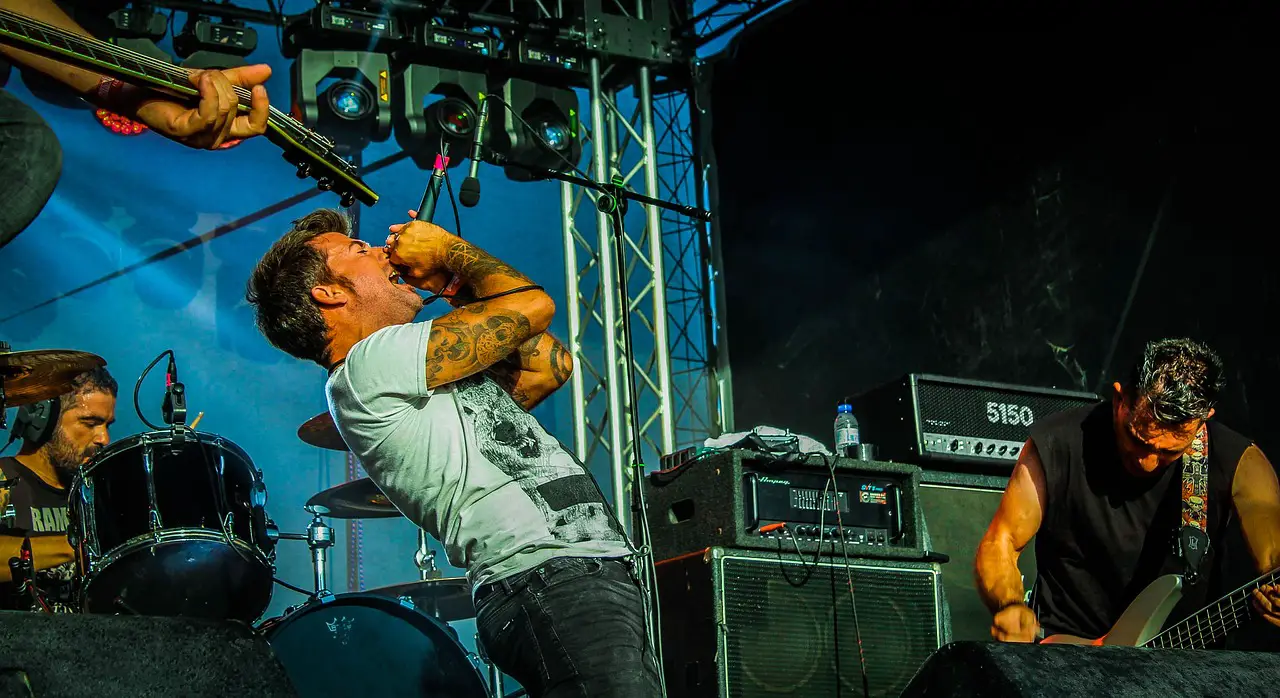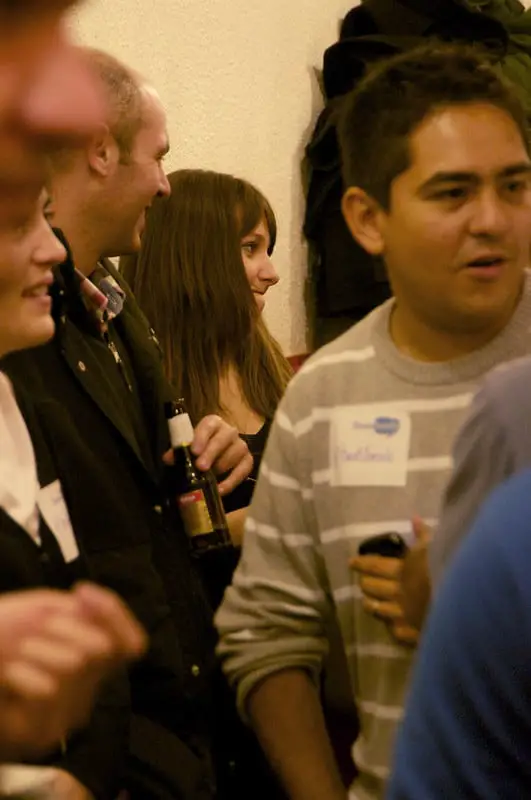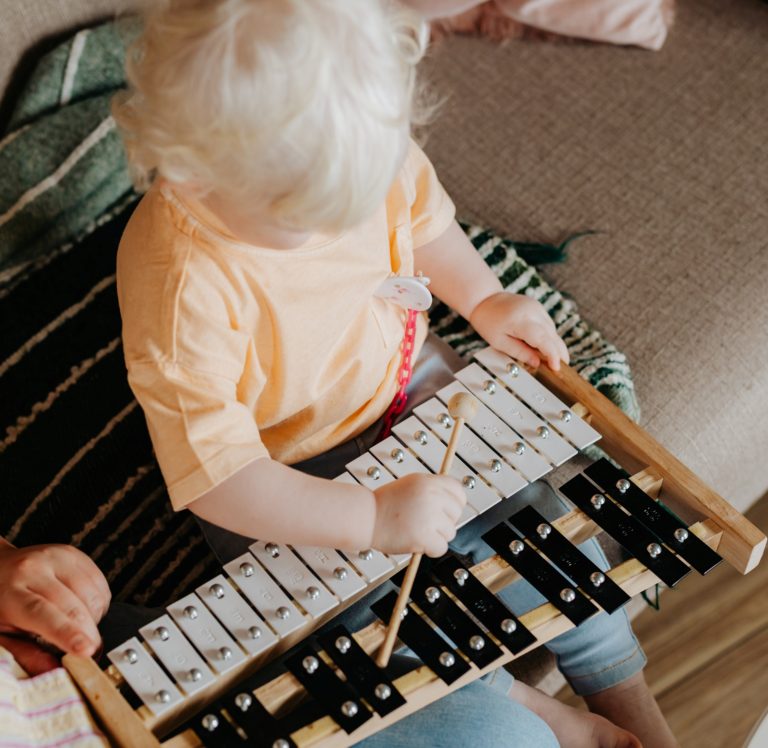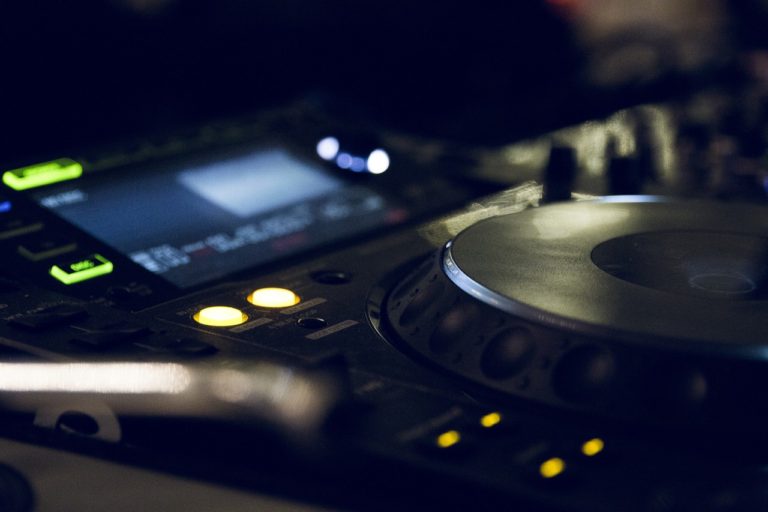What are the different types of metal vocals?
In metal, vocals are a defining element of the genre, known for their raw power and diverse delivery.
The different types of metal vocals are often classified as either clean or harsh, which each cover various techniques such as operatic falsettos, growling, rapping, screaming and even scatting.
Within the metal world, lead singers can often define themselves by the type of vocals they can produce. If some specialize in just one type, you might find bands with different specialist clean and harsh vocalists.
As no two band takes the same approach, trying to get to grips with the various types of metal vocals takes some time. In this article we’ll break down the most common types of metal vocals, and what differentiates them from one another.
What Are The Different Types of Metal Vocals?
When it comes to classifying metal vocals, you will generally find them categorized into two main categories – clean and harsh.
Clean vocals are any type of singing where words are easily distinguishable. But don’t think there is just one particular style. This group covers a wide range of vocals ranging from melodic verses to rap and even opera if it fits with the song.
Harsh vocals are vocals that are delivered with much more anger and can be harder to discern what some words are. Normally, you will find extreme vocalists employing a raft of techniques including screams, growls and throat singing.
Don’t think that you will only hear just one vocal type in a song either. Most bands will mix things up to create a more interesting listening experience and keep listeners on their toes as a song progresses.
What Are The Different Types of Clean Metal Vocals?
As heavy as some metal genres get, many still employ clean vocals somewhere within their work. You will often find that choruses are sung clean to get the song’s main hook across.
However, metal vocalists have employed different styles to stand out within their subgenres. These little twists are what have made singers and bands find an audience that has launched them to superstardom. So what type of clean vocals are out there?
Melodic Vocals
Even though melodic vocals are best suited for pop, they also can work in metal music. Delivering vocals with clear, melodic tones place a titanic shift away from any screams that come before it.
It also gives a much more emotional pull when singers want to get a message across. A great example of this can be found in metalcore where bands use a clean chorus to deliver a silver lining to whatever cloud is bubbling in a screamed verse. The likes of Trivium and Killswitch Engage have done this superbly down the years to sell albums by the million.
Falsetto
Very few vocal techniques are as hard to pull off as a falsetto. One of the highest vocals ranges around, singers produce this tone by using their noses and head to generate the tones rather than their chest. It produces higher notes as a result, which are often prolonged for dramatic effect.
You’ll find that some of metal’s greatest vocalists use a falsetto as their trademark. Legendary metal vocalists such as Bruce Dickinson (Iron Maiden) and Rob Halford (Judas Priest) are two icons that are known for producing these high warbles. It’s why NWOBHM, power metal and hair metal have reached the heights of popularity that they have.
Opera
Believe it or not, opera and metal go together perfectly. Nothing catches the ears better than an operatic chorus supported by huge power chords and rising synth harmonies. It’s a particularly unique sound that has arisen over much of the 21st century.
Much of this can be found in the growing popularity of symphonic metal – particularly across Europe. The iconic sounds of singers such as Tarja Turunen (Nightwish) and Sharon Den Adel (Within Temptation) have shown just what a powerful voice can achieve when hitting stratospheric levels.
What Are The Different Types of Harsh Vocals?
Whether you are growling, screaming or even shrieking, it takes years of practice to get screaming vocals nailed to perfection.
To the untrained ear, harsh vocals can be off-putting to listen to. However, those in the know will tell you that much effort goes into training your voice to deliver such rough styles night after night.
How Do Performers Produce Harsh Sounds?
As intense as harsh vocals sound, a lot of these styles are produced by relaxing your mouth muscles. By relaxing your lips and mouth, you are then able to project sounds at a lower pitch.
The rest of the work is produced by two areas: your diaphragm and your throat. Firstly, singers will inhale deeply to ensure they get air within the diaphragm. As they then expel the air deep from their body, singers lower their vocal cords to produce a growl.
This produces low, guttural sounds which sound like a growl. So when the singer starts to produce words, it’ll come out in a low growl. It’s up then to the singer to adjust their vocal cords and mouth to find their ideal pitch and switch between a growl, scream or shriek.
Types of Harsh Metal Vocals
Scream
Anyone who was involved in the post-hardcore boom of the 2000s will be used to hearing screams in their music. Earmarked as one of the higher harsh registers, a scream often is used for immediate dramatic effect. It is also interlinked with clean vocals at times to add emotional impetus to a song.
Bands such as Hawthorne Heights, Falling In Reverse and Bullet For My Valentine have all become popular within mainstream music for using screamed vocals. Having become so familiar over time, genres such as “screamo” were coined thanks to the use of screams in music.
Growl
No part of death metal is quite as iconic as the growl. Hitting lower registers, singers particularly use their throats to produce growls that are unsettling to listeners. Set against drop D-tuned guitars and crunching chords, this vocal technique makes any music sound harsh and angry.
It’s a technique used by the best metal bands who have enjoyed success. Whether it is thrash bands such as Lamb of God, death metal icons such as Cradle of Filth or Machine Head, to crossover acts like Parkway Drive or Bring Me The Horizon, they all use the death growl in their music. The iconic lows have also contributed to the death growl ironically being dubbed “Cookie Monster vocals”, due to their resemblance to the famous children’s TV character.
Shouting
Not without their place in music, shouting keeps listeners on their toes whenever they are used. Often used to deliver messages upfront, shouts delivered as vocals create a chaotic and confronting tone to any music. It’s why it has become a popular tool for both hardcore and punk bands to use in their music.
If they don’t feel impactful on record, shouted vocals on the live stage deliver the message harder than any other style. Delivered in a low register, shouts will elicit reactions from the crowd. Legendary acts like Converge and Refused have used these to deliver succinct and impactful messages as well as energetic live shows.
Other Types of Metal Vocals
There are always more than just your standard types of harsh and clean vocals. Some of these include:
- Rapping – In some genres, vocalists have used rap to merge different influences and deliver a sound that is unique to anything else out there. Acts such as Linkin Park and Limp Bizkit took over the world by using rapping to bring their nu-metal style to the masses and become household names.
- Chanting – Some bands use chants and throat singing to cater to a particular style. Whether it’s acknowledging cultural heritage or certain beliefs, using these unique styles catches listeners off-guard. It is why bands such as The Hu have earned cult status in the music world.
Final Thoughts
As you can tell, there is a lot of difference within metal vocals. No matter if they are clean or harsh, it takes a lot of technique to pull off. Clean vocals use all parts of your body to manipulate styles such as your head and nose to pull off higher registers.
Harsh vocals are all about using your diaphragm and throat to produce guttural growls and brutal screams. It is what helps give each subgenre within metal a unique identity to themselves.








